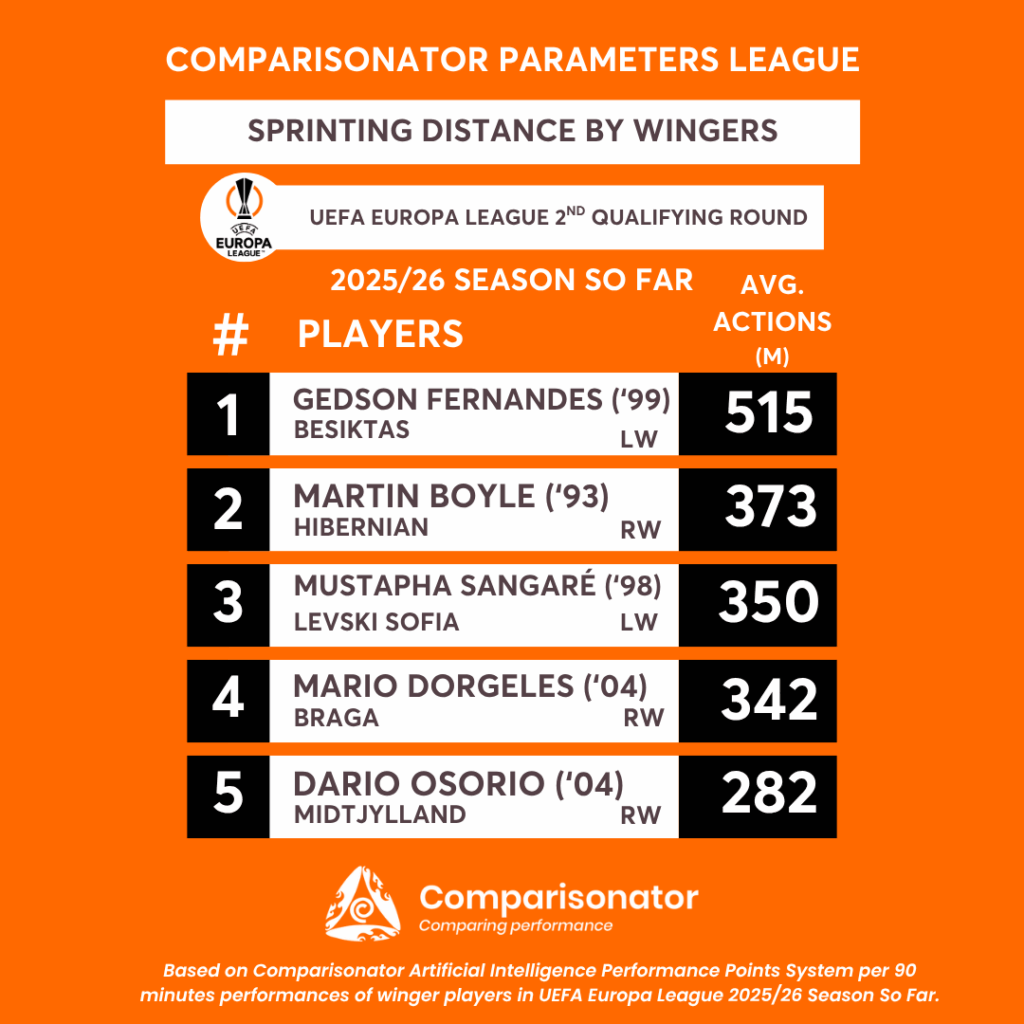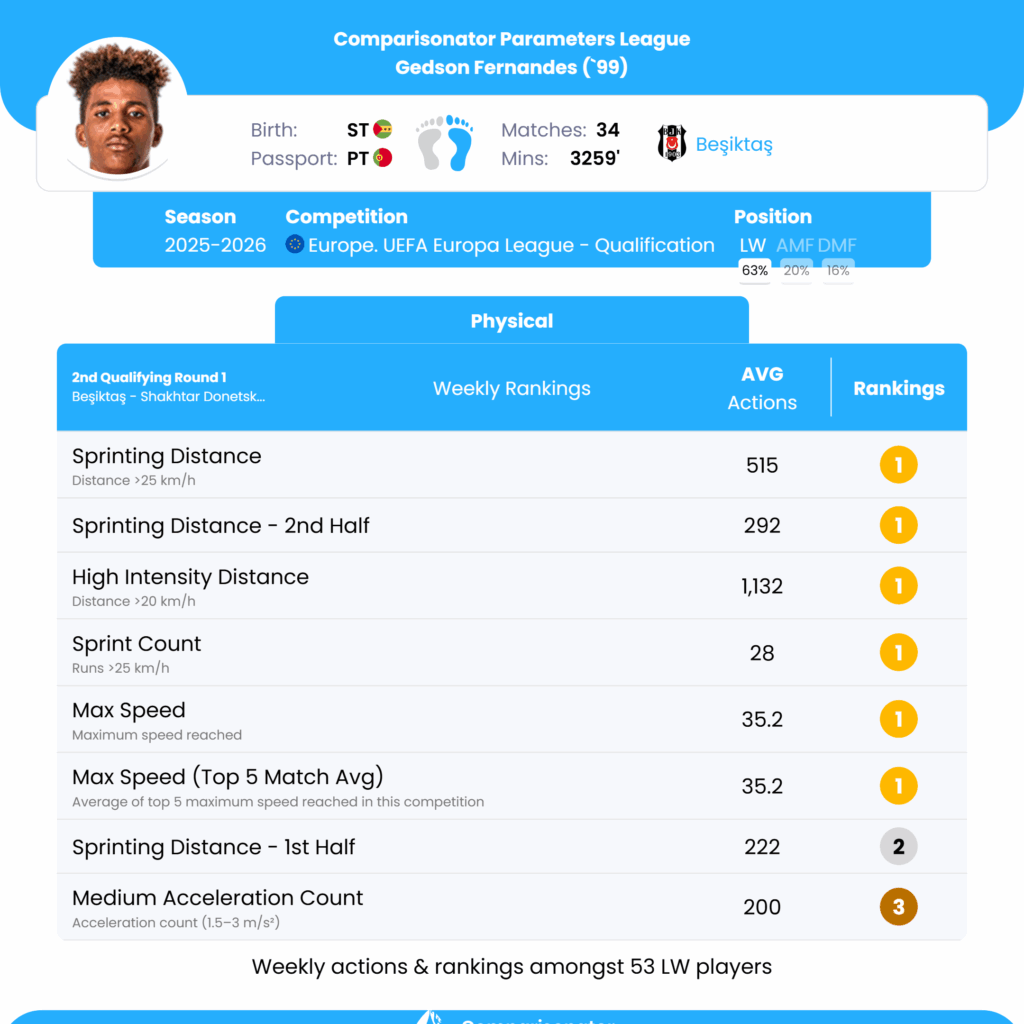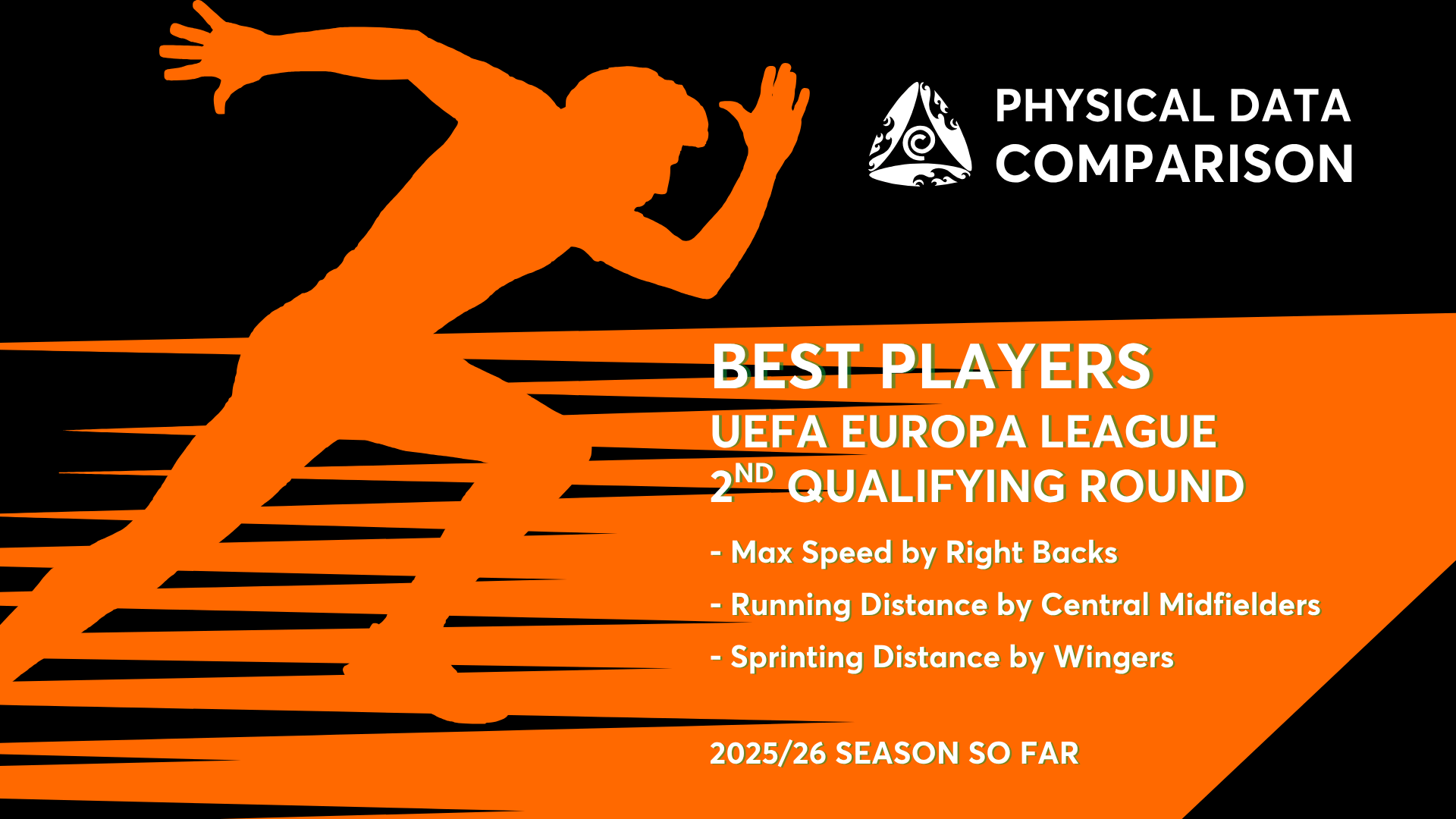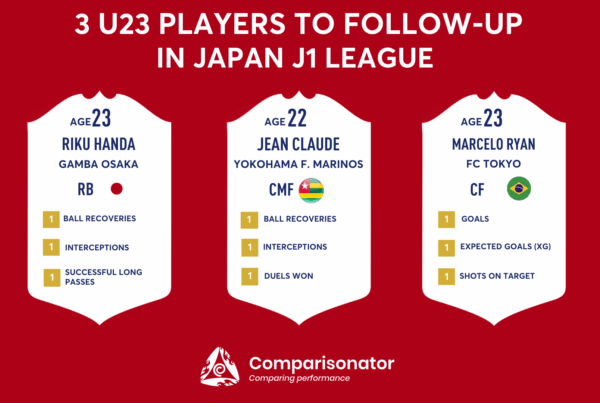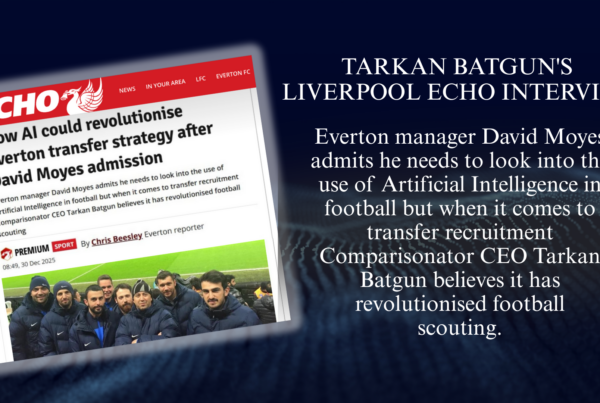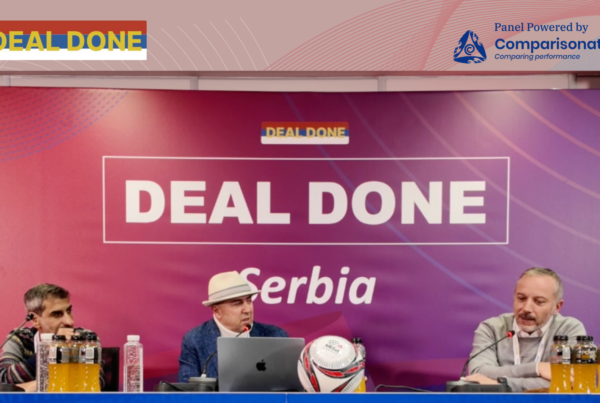As the physical demands of modern football continue to rise, tracking player movement data has become essential for identifying top-performing young talents. Leveraging the advanced capabilities of the Comparisonator Physical Data Comparison Module, we’ve analyzed the UEFA Europa League 2nd Qualifying Round to spotlight the best players across three critical physical parameters during the 2025/26 season so far.
This detailed analysis equips clubs, scouts, and analysts with valuable insights into emerging athletes whose physical performances set them apart on the pitch. Powered by AI and extracted from broadcast data, these metrics provide accurate and contextual benchmarks for player evaluation.
In the Sprinting Distance category—tracking movement >25 km/h—Gedson Fernandes leads the rankings, demonstrating consistent high-tempo involvement. Godswill Ekpolo tops the charts in Max Speed covered, emphasizing his exceptional endurance and work rate. Meanwhile, Silas Andersen excels in Running Distance, showcasing his explosiveness and frequent high-speed runs exceeding 15-20 km/h.
These findings not only highlight Europe’s next generation of talent but also reinforce the strategic value of physical analytics in recruitment and squad building. Stay tuned as we continue to reveal more data-driven standouts throughout the season.
Please note that all numbers are per 90 min data from the 2025/26 Season – So Far.
Godswill Ekpolo’s CompaGPT Physicals report:
Ekpolo’s Max Speed performance was outstanding, achieving an average of 35.65, again leading his position group, which underscores his capability to reach peak speeds during crucial moments, an asset for chasing down opponents or breaking forward on counter-attacks. However, while he excelled in High Deceleration Count with a third-place ranking, this aspect suggests room for improvement in maintaining control after rapid movements. In the selected matches, Ekpolo demonstrated impressive physical capabilities, notably achieving top rankings in several categories. He excelled in High Acceleration Count, averaging 33 per match, ranking first among his peers, alongside Mattia Zanotti. This indicates Ekpolo’s ability to quickly change pace, a crucial aspect for a full-back tasked with both defensive duties and offensive support. His performance in the second half was equally strong, maintaining a leading position with 17.5 High Accelerations, showcasing his endurance and sustained intensity throughout the game.
Godswill Ekpolo’s standout parameters included his High Acceleration Count and Max Speed, both ranking first in his position group. These metrics are tactically significant, highlighting his ability to impact the game through quick pace changes and high-speed runs. Such attributes are vital for a right-back’s role in modern football, contributing to both defensive solidity and attacking support. His top-tier Max Speed provides strategic advantages in both defensive recoveries and offensive overlaps. While he ranks slightly lower in other areas like Sprinting Distance and High Speed Running Distance, his performance remains strong, suggesting a balanced physical contribution that can be harnessed in various tactical setups.
Godswill Ekpolo (’95) (RB) – AEK Larnaca
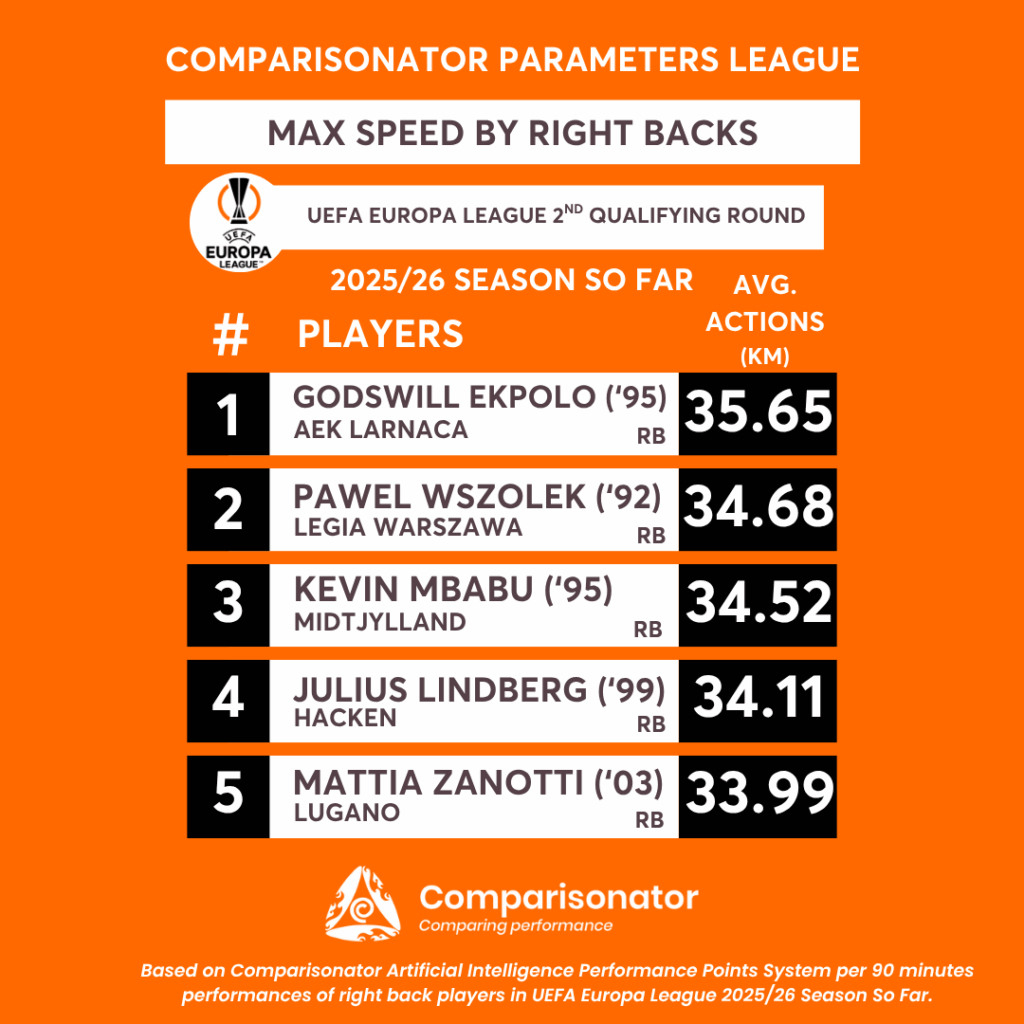
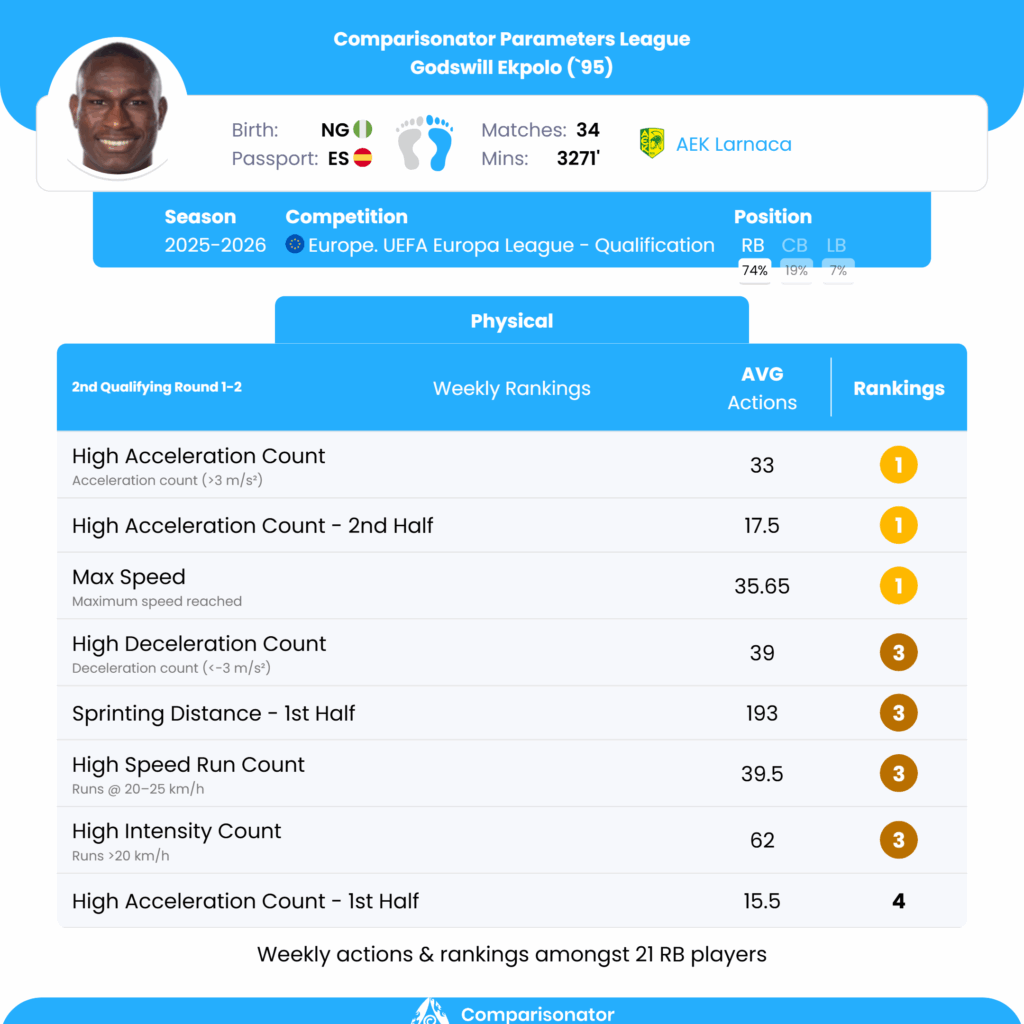
Max Speed
Silas Andersen’s CompaGPT Physicals report:
Silas Andersen’s physical performance in the Häcken vs. Anderlecht match, where he played 135 minutes, demonstrated impressive endurance and activity levels across various metrics. His total distance covered was exceptional, averaging 17,344.81 meters per match, placing him 1st out of 42 players in the same position. This indicates his ability to maintain high energy levels throughout extended match durations, surpassing other players like Enric Llansana, who averaged 16,595.5 meters. Additionally, Andersen’s first and second half total distances were consistently high, with averages of 6,605.9 and 6,578.89 meters respectively, ranking him as the top performer in both halves. His ability to sustain these distances demonstrates his stamina and work rate across the entirety of the match. Furthermore, Andersen excelled in high-speed running, averaging 1,340.24 meters in the first half, and a total of 1,329.37 meters per match. This positions him 2nd among his peers, indicating his ability to cover ground rapidly, an essential trait for transitioning between defensive and offensive phases. His sprint count, averaging 35 per match, also reflects his capability to execute quick, decisive movements, crucial for breaking defensive lines and creating opportunities.
Silas Andersen’s performance in selected matches showcases his outstanding physical attributes, particularly his ability to cover extensive distances and maintain high activity levels throughout the match. His rankings in total distance, medium acceleration, and high-speed running distances were among the best, emphasizing his stamina, agility, and tactical versatility. These strengths can be tactically leveraged to enhance Häcken’s midfield dynamics, providing both defensive solidity and offensive support. Andersen’s ability to sustain high-intensity efforts and adapt to the game’s demands positions him as a key asset in Häcken’s squad, capable of influencing both defensive and attacking phases effectively.
Silas Andersen (’04) (CMF) – Hacken
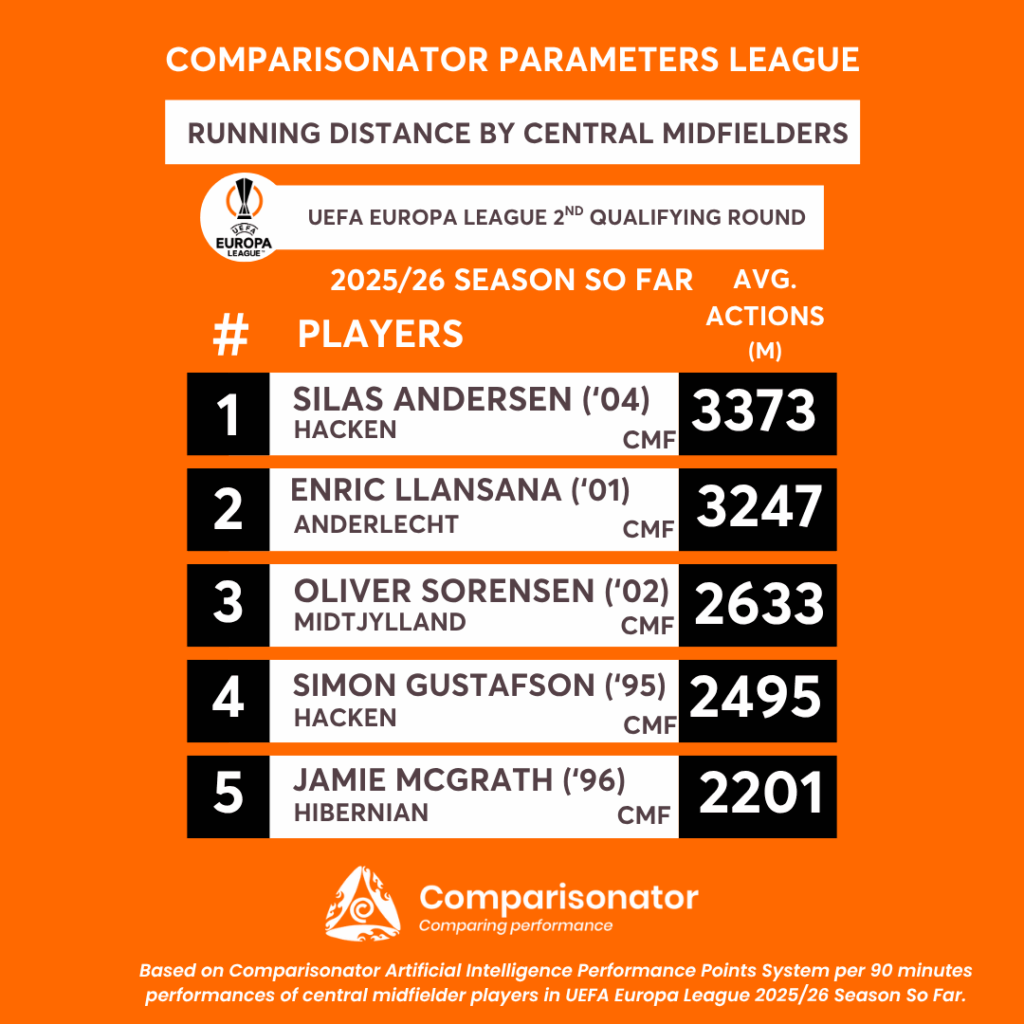
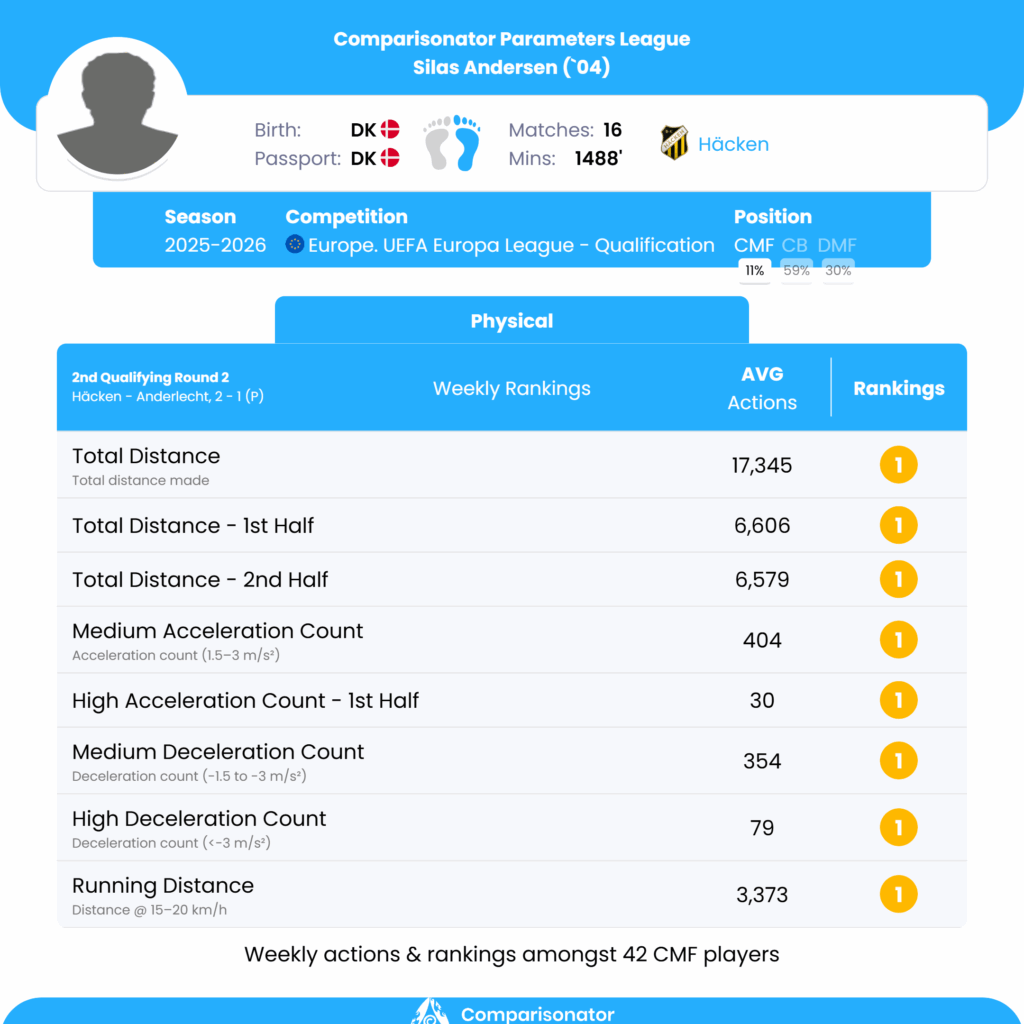
Running Distance
Gedson Fernandes’s CompaGPT Physicals report:
Gedson Fernandes’ performance in the selected matches against Shakhtar Donetsk, where he played 100 minutes, highlights several standout physical attributes. His sprinting distance average per match was a remarkable 514.53 meters, securing the top rank among 53 players in the same position. This exceptional sprinting capability indicates his ability to cover large areas swiftly, contributing significantly to both offensive and defensive transitions. Compared to category leader Martin Boyle, who achieved 373.26 meters, Gedson’s sprinting distance underscores his superior endurance and speed. Gedson’s sprint count per match was 28, another category he led, surpassing Martin Boyle’s 26. This frequency of sprints demonstrates his repeated engagement in high-speed actions, a vital component of pressing strategies and rapid offensive movements.
Gedson Fernandes’ best ranking parameters include sprinting distance, high intensity distance, sprint count, and maximum speed. These attributes collectively highlight his exceptional physical capabilities, which can be tactically leveraged to enhance Beşiktaş’s attacking and defensive strategies. His ability to maintain high levels of speed and intensity throughout the match provides the team with a dynamic option on the left wing, capable of influencing the game in crucial moments through rapid transitions and relentless pressure.
Gedson Fernandes (’99) (LW) – Beşiktaş
